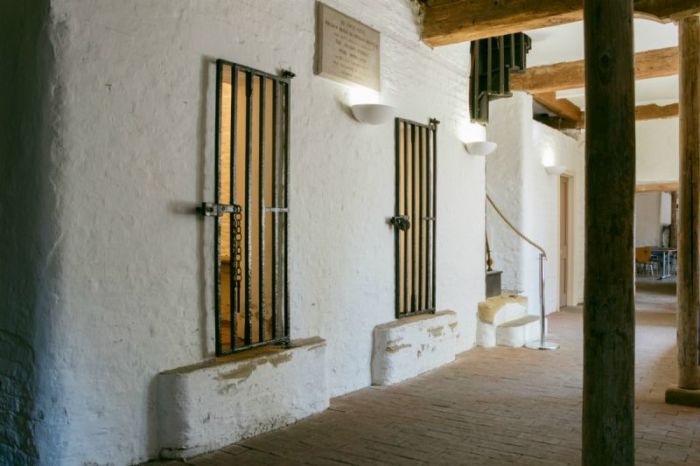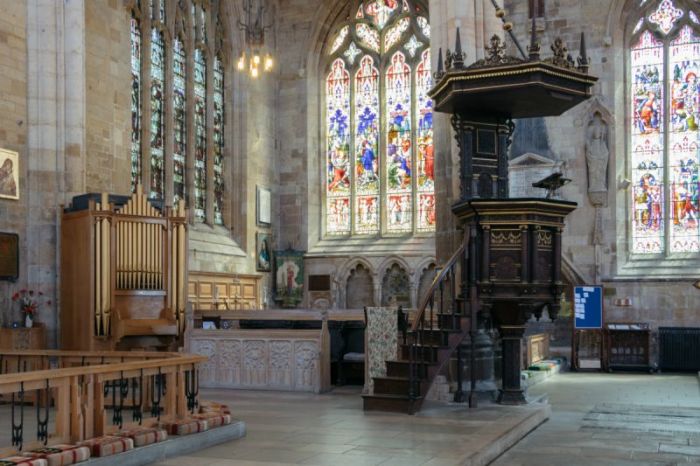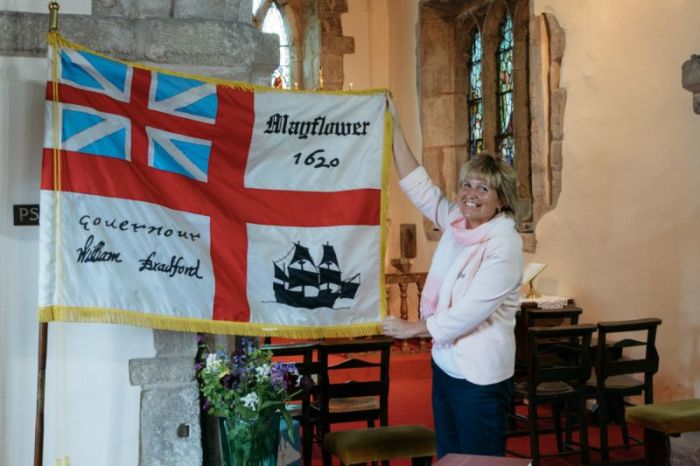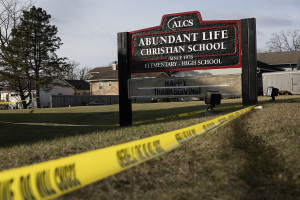On the Pilgrim Trail Across England, 400 Years After the Mayflower, Part 2

I'm in the historic English city of Lincoln ahead of the 400th anniversary of the Pilgrims leaving these shores on the Mayflower.
The anniversary is an opportunity for both Americans and Britons to learn about the history of the Pilgrims, not least the history beyond the Mayflower folklore at the heart of the annual Thanksgiving holiday.
After first visiting Harwich, home of Mayflower Captain Christopher Jones and likely where the ship was built, I drove to Lincoln where I learned about its extensive connections to the Pilgrims and those who followed them. Along the way, I stopped in Boston, the namesake of Boston, Massachusetts.
In the original Boston, I discovered the finely preserved circa 14th century Guildhall, including the cells where William Bradford, arguably the most famous of Mayflower passengers, and other Pilgrim leaders were jailed after attempting to leave for the Netherlands in 1607. I also explored St. Botolph's Church, which rivals some cathedrals in size, and saw the pulpit used by John Cotton, a firebrand Puritan clergyman.

Four hundred years ago, Lincolnshire and neighboring Nottinghamshire were on the frontlines of religious dissent with the two main factions being Puritans, who wanted to reform the Church of England from within, and Separatists, who, as their name implies, wanted to separate from the established church.
Some of the divide was over doctrine and practices (aka churchmanship). However, much of the division centered on church polity, as in the structure or government of the church.
The Church of England, established by Parliament, headed by the monarch since Henry VIII, run by bishops from thrones in their cathedrals and operated on a day-to-day basis by priests, was rejected by the radical reformers as too hierarchical and too Roman Catholic. This was the basis for several of today's Protestant denominations, including the Baptists and Congregationalists.
History tells us the Pilgrims fled to America for religious freedom. And while it is certainly true that they looked to the New World and saw an opportunity to freely practice their kind of Protestant Christianity, the Pilgrims, as well as the early waves of emigrants from England that followed them, only cared about religious freedom for themselves. They had little toleration for dissenting voices with the best example of their hypocrisy being the founding of Rhode Island by Roger Williams as a "liberty of conscience."
To better understand the people, places and history, I went on a Mayflower 400 day tour with Adrian Gray of Pilgrims & Prophets, which specializes in Christian heritage tours. For Christians, this part of England is also interesting because the religious history goes back to the earliest days of Christendom in the British Isles and continues beyond the Pilgrims to the formation of other dissenter denominations, including the Methodists.
I'm generally not a fan of guided tours or group excursions, as I don't like being on someone else's schedule. However, Gray's expert knowledge and connections to local historic sights were invaluable, as it would have impossible to access some of the places tied to the Mayflower on my own. This was especially true with the churches once attended by the Pilgrims. (The guestbook of one church, which according to the signboard in the churchyard is almost never open, listed only a dozen or so visitors since last summer.)

I stopped at the parish churches in the villages of Babworth, Scrooby and Austerfield, where Bradford and William Brewster would have worshipped and the Rev. Richard Clyfton, a Church of England priest-turned-Separatist, preached. In Austerfield, the churchwarden showed me around the Norman-era church, which was within walking distance from the old manor house Bradford called home.
I also visited Gainsborough Old Hall, where it is believed Separatists once worshipped in secret, and Sturton-le-Steeple, which John Carver, the first governor of Plymouth Colony, and John Robinson, who left the Church of England priesthood, called home. As if that wasn't enough history, this tiny village, known in the 1600s as Styrton, or Sturton is modern spelling, can also claim John Smyth, the first Baptist and a contemporary of the Pilgrims.
These are all places the Pilgrims knew, though admittedly the landscapes and cityscapes have changed greatly since the early 17th century.
What struck me most — besides seeing where so many Pilgrims came from — was the high concentration of religious dissenters in such a small area.
Take Sturton-le-Steeple as an example. This Nottinghamshire village could be claimed as the home of both Baptists and Congregationalists. That's pretty remarkable when you consider its population of fewer than 500 inhabitants
If you go
I stayed at the White Hart Hotel, which is near Lincoln's medieval cathedral. It was the perfect base for exploring both Lincoln and the surrounding area. I recommend booking a room on the upper floors, as they come with million-dollar views of the cathedral and the quaint old town. Room rates, which start at about £81 (approximately $108), include breakfast.
For dinner, I recommend either Browns Pie Shop (note the lack of an apostrophe), which is a great little restaurant, or the Wig & Mitre, a traditional English pub with so-called gastropub fayre. Both have an extensive drinks menu, including wine.
Spires and Crosses, a travel column exclusive to The Christian Post, is published every week. Follow @dennislennox on Twitter.





























